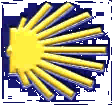
on the
Camino de Santiago
 |
Bicycle Touring
on the Camino de Santiago |
|
|
| Traveling
along the camino by bicycle is a challenging undertaking, for both person
and equipment. The route is around 800 kilometers (500 + miles) and crosses
two mountain passes; in addition, the original camino at times travels along
forest roads, cobblestone, gravel, and soft sand paths. The route is marked
by official signs, as well as yellow arrows painted on fenceposts, rocks,
and buildings. It's been 10 years since this site was established, and unfortunately, there are still no bicycle touring guidebooks available
in english. The guidebooks for foot pilgrims
provide some useful info and a good map of northern
Spain is also essential. A touring bicycle with sturdy panniers is a must, and if one wants to travel solely on the camino, a mountain bike with full suspension is recommended. We chose to travel some stretches on the 'carretera' to avoid the rough sections. It is possible to travel all the way on the camino with a loaded bike. We met up occasionally with a group of 3 people from Switzerland who had chosen to 'do every inch on the camino'. I can not emphasize enough the importance of going for a testride with the loaded bike at home. Unpacking the bike at the Pamplona airport and discovering that the rack is not strong enough to hold the panniers, or that ones heels hit the panniers with every stroke is not a good way to start the trip. Be sure to have your bike checked and tuned at your local bike shop before you leave. Your bike shop will also box your bicycle for you, often for free or a very small charge (ask where they are going to put the small parts! we found our front quick release pin inside our waterbottles). Airlines charge a fee for transporting your bicycle. Delta charges $75.00 per bike. If they insist on charging you more, asked that they look under 'international travel, sports equipment, bicycles" in their computer. If they still insist on charging more (they did for us) pay with a credit card and see one of the supervisors in the international terminal to have the difference refunded to you (we did). On your return trip, the ground personal at the Santiago de Compostela airport is used to bicycle pilgrims and will take your bike from you with a smile and handle it without you having to hunt for a box. Our bikes arrived in pristine condition in Atlanta. Between Atlanta and Chattanooga, however, ASA managed to break one of the barends, don't ask us how! |
| One
of the great ways to experience the pilgrimage is to stay in a 'refugio'.
These are shelters provided by churches and Saint James Societies, usually
consisting of sleeping facilities (dormitories with bunkbeds are common),
showers, bathrooms, frequently also a kitchen and a common room. Pilgrims
are allowed to stay one night for a very small fee (3 to 5 Euros)
and are expected to have a sleeping bag. A pad is useful, sometimes the
mattresses are all taken and the only place left is on the floor. One must
have a 'credencial de peregrino' which is stamped at
each stop, to stay there. For those wishing a little more comfort, hotels and hostals are plentyful, and most bars also have lodgings available (ask 'tiene habitaciones?' 'do you have rooms' when stopping for a 'vino tinto'). Prices range from 30 Euros (double) for simple accomodations to 300 Euros for the luxurious Parador 'Hostal de los Reyes Catolicos' in Santiago de Compostela. We recommend staying there at the end of the trip if you can fit it into your budget, this 5 star hotel is located right next to the cathedral in the 'Plaza de Obradoiro' |
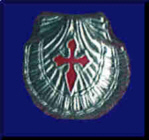 |
|
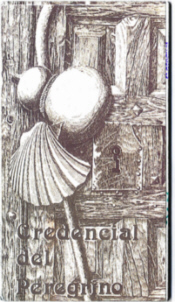 |
Obtaining a pilgrims
pass is essential if one wishes to stay at the refugios.
Even if you plan to stay in hotels, the pass is required
to obtain the certificate of completion (Compostela) at the pilgrims office
in Santiago. The pass can be obtained in numerous places including St.-Jean-Pied-de-Port, Roncesvalles, Pamplona at the Pilgrim Office in the University of Navarra and from many refugios, churches, police stations, the guardia civil, ayuntamientos and the offices of local Amigos del Camino de Santiago. |
|
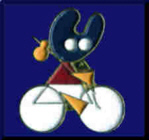 |
The
weather in Spain is most conducive to cycling in May, June, September, and
October. July and August can be quite hot without any shade on the Meseta
(Leon region) with highs 100 degrees
F. The altitude one climbs (up and down, multiple times !) is close to 4000 feet, so once again, be certain to pack clothes that can be layered for warmth. In the winter, travel should be undertaken only by those who wish to experience the hardships faced by the early pilgrims during the middle ages. |
|
| Forget the travellers checks. Take a small amout of money ($100) in Dollars and your ATM card. Make sure your security code for the card is only 4 digits and you will be able to draw money from your checking account as needed. Even the small towns in Spain have several instant banker machines. |
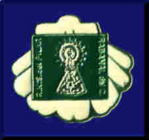 |
|
|
Fluency in spanish
is not a requirement for enjoying the trip. Many people speak some english,
but knowledge of some phrases and common courtesies is quite helpful in
adding to the experience. Several phrasebooks
are available for the traveller.
|